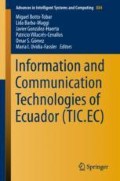Abstract
In millimeter-wave (mm-wave) massive MIMO systems, the channel estimation (CE) is a crucial component to set the mm-wave links. Unfortunately, acquiring channel knowledge is a source of training overhead. In this paper, we propose a CE method leveraging measurements at sub 6-Ghz frequencies in order to reduce the training overhead. This solution extracts spatial information from a sub 6-Ghz channel using a virtual channel transformation, such as the searching space is reduced to the information provided by the low frequency channel. In a second stage, a multicell system and its interference between cells is analyzed, proposing a coalitional game to deal with the intercell interference. In the single cell case, we analyze the proposed method in different SNR scenarios, the computational complexity and over user equipment (UE) mobility environment. Finally, we analyze how the coalitional game improves the throughput and its performance over UE in mobility cases.
Access this chapter
Tax calculation will be finalised at checkout
Purchases are for personal use only
References
Wang J, Zhu H, Gomes NJ (2012) Distributed antenna systems for mobile communications in high speed trains. IEEE J Sel Area Commun 30(4):675–683
Hassibi B, Hochwald BM (2003) How much training is needed in multiple-antenna wireless links? IEEE Trans Inf Theory 49(4):951–963
Heath J, Robert W (2013) What is the role of MIMO in future cellular networks: massive? Presentation delivered at IEEE international conference on communications (ICC)
Maschietti F, Gesbert D, Kerret P, Wymeersch H (2013) Robust location-aided beam alignment in millimeter wave massive MIMO. In: GLOBECOM 2017-2017 IEEE global communications conference, pp 1–6
Hur S, Kim T, Love DJ, Krogmeier JV, Thomas TA, Ghosh A (2013) Millimeter wave beamforming for wireless backhaul and access in small cell networks. IEEE Trans Commun 61(10):4391–4403
Alkhateeb A, El Ayach O, Leus G, Robert RW (2014) Channel estimation and hybrid precoding for millimeter wave cellular systems. IEEE J Sel Top Signal Process 8(5):831–846
Alkhateeb A, Ayach OE, Leus G, Heath RW (2013) Hybrid precoding for millimeter wave cellular systems with partial channel knowledge. In: Proceedings of information theory and applications workshop (ITA), February 2013, p 15
Ayach OE, Rajagopal S, Surra SA, Pi Z, Heath RW (2013) Spatially sparse precoding in millimeter wave MIMO Systems. In: Proceedings of information theory and applications workshop (ITA), February 2013, p 15
Wang Y, Venugopal K, Andreas F, Heath RW Jr (2017) Analysis of urban millimeter wave microcellular networks. IEEE Trans Veh Technol 66(10):8964–8978
Va V, Heath RW Jr (2017) Basic relationship between channel coherence time and beamwidth in vehicular channels. IEEE Trans Veh Technol 66(10):8964–8978
Garcia N, Wymeersch H, Strom EG, Slock D (2016) Location-aided mm-wave channel estimation for vehicular communication. In: IEEE 17th international workshop on signal processing advances in wireless communications (SPAWC), July 2016, pp 1–5
Ali A, Gonzalez-Prelcic N, Heath RW Jr (2016) Estimating millimeter wave channels using out-of-band measurements. In: Proceedings of information theory and applications (ITA) workshop, February 2016, p 15
Ali A, Gonzalez-Prelcic N, Heath RW Jr (2018) Millimeter wave beam-selection using out-of-band spatial information. IEEE Trans Wirel Commun 17:1038–1052
Sayeed AM (2002) Deconstructing multiantenna fading channels. IEEE Trans Signal Process 50(10):2563–2597
Rappaport TS, Sun S, Mayzus R, Zhao H, Azar K, Wang GN, Wong JK, Schulz M, Samini F Gutierrez (2013) Millimeter wave mobile communications for 5G cellular: it will work! IEEE Access 1:335–349
Sayeed AM, Raghavan V (2016) A fast channel estimation approach for millimeter-wave massive MIMO systems. In: Proceedings of IEEE global conference on signal and information processing, Arlington, VA, USA
Va V, Choi J, Shimizu T, Bansal G, Heath RW Jr. Inverse multipath fingerprinting for millimeter wave V2I beam alignmen. IEEE Access
Palacios P, Castro A (2018) Cognitive radio simulator for mobile networks: design and implementation. i-manager’s J Commun Eng Syst 7(2):1–9
Saad W, Han Z, Debbah M, Hjorungnes A, Basar T (2009) A distributed coalition formation framework for fair user cooperation in wireless networks. IEEE Trans Wirel Commun 8(9):4580–4593
Pantisano F, Ghaboosi K, Bennis M, Verdone R (2010) Interference avoidance via resource scheduling in TDD underlay femtocells. In: Proceedings of the IEEE PIMRC workshop on indoor and outdoor femto cells, Istambul, Turkey, September 2010
Zhang Z, Song L, Han Z, Saad W (2014) Coalitional games with overlapping coalitions for interference management in small cell networks. IEEE Trans Wirel Commun 13(5):2659–2668
Huang C-Y, Sjostrom T (2006) Implementation of the recursive core for partition function form games. J Math Econ 42:771–793
Pantisano F, Bennis M, Saad W, Verdone R, Latva-Aho M (2011) Coalition formation games for femtocell interference management: a recursive core approach. In: Proceedings of 2011 IEEE wireless communications and networking conference, Cancun, Quintana Roo, Mexico, March 2011, p 2831
Bogomonlaia A, Jackson M (2002) The stability of hedonic coalition structures. Games Econ Behav 38:201–230
Author information
Authors and Affiliations
Corresponding authors
Editor information
Editors and Affiliations
Rights and permissions
Copyright information
© 2019 Springer Nature Switzerland AG
About this paper
Cite this paper
Palacios, P., Freire, J.J., Román-Cañizáres, M. (2019). Millimeter-Wave Channel Estimation Using Coalitional Game. In: Botto-Tobar, M., Barba-Maggi, L., González-Huerta, J., Villacrés-Cevallos, P., S. Gómez, O., Uvidia-Fassler, M. (eds) Information and Communication Technologies of Ecuador (TIC.EC). TICEC 2018. Advances in Intelligent Systems and Computing, vol 884. Springer, Cham. https://doi.org/10.1007/978-3-030-02828-2_1
Download citation
DOI: https://doi.org/10.1007/978-3-030-02828-2_1
Published:
Publisher Name: Springer, Cham
Print ISBN: 978-3-030-02827-5
Online ISBN: 978-3-030-02828-2
eBook Packages: Intelligent Technologies and RoboticsIntelligent Technologies and Robotics (R0)

